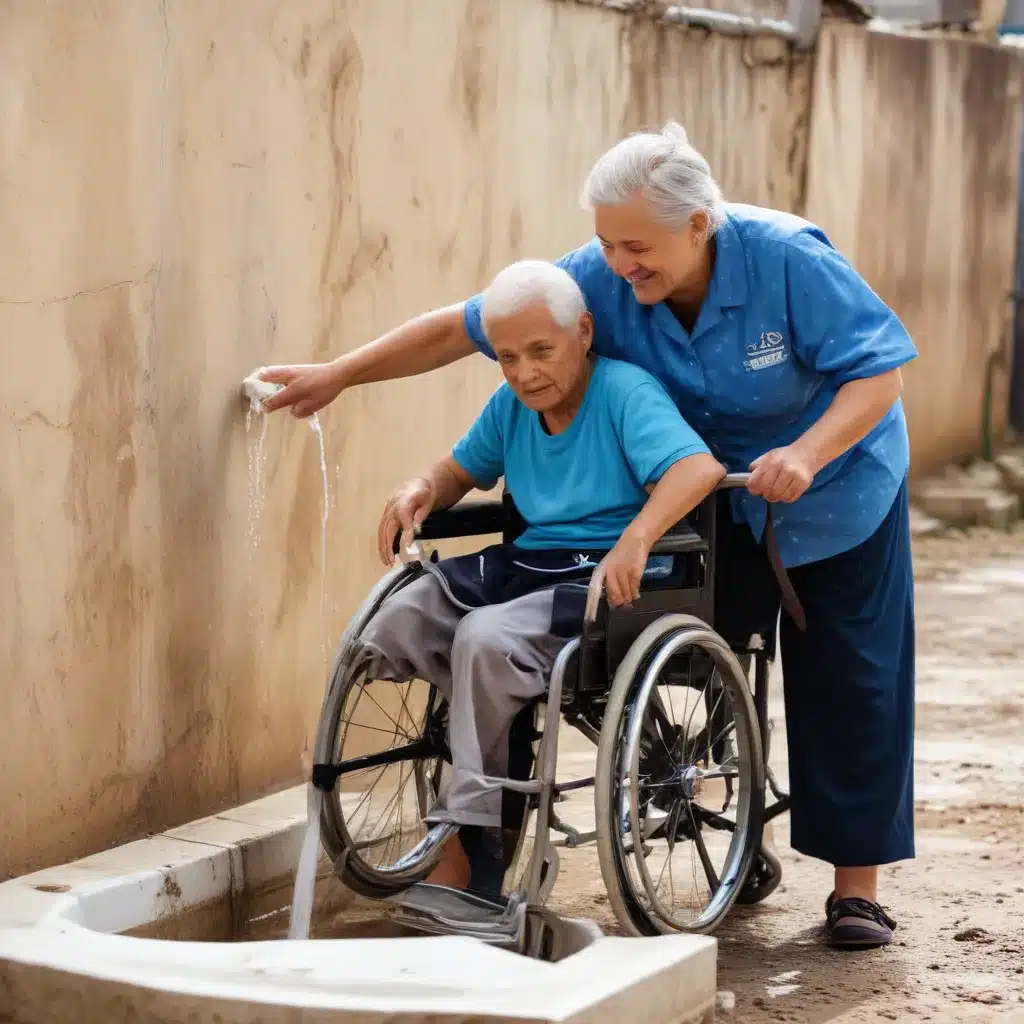
Empowering the Most Vulnerable Through Equitable Access to WASH
Ensuring universal and equitable access to water, sanitation, and hygiene (WASH) services is a fundamental human right. Yet, for many people with disabilities and older persons, this right remains elusive. As the world grapples with the ongoing COVID-19 pandemic, the need to prioritize inclusive WASH planning has never been more critical.
People with disabilities and older adults face disproportionate challenges in accessing WASH facilities and services. They are more susceptible to the direct and indirect impacts of infectious diseases, experiencing higher rates of hospitalization, intensive care, and mortality. Compounding these health risks are the social, physical, and institutional barriers that impede their full participation in WASH programming.
“To ensure no one is left behind, we must center the experiences and needs of the most vulnerable in our WASH planning and implementation.”
Assessing Barriers and Strengthening Inclusion
Embracing an inclusive WASH approach requires a systematic assessment of the unique challenges faced by people with disabilities and older persons. By engaging these marginalized groups, we can better understand the physical, social, and institutional barriers that hinder their access to WASH services.
Physical Barriers: Inaccessible infrastructure, such as handwashing stations or latrines with steps or narrow doorways, can prevent people with physical, sensory, or cognitive impairments from using WASH facilities independently and with dignity. Identifying and addressing these barriers is a critical first step.
Social Barriers: Discrimination, stigma, and harmful societal attitudes can further marginalize people with disabilities and older adults, excluding them from community-based WASH activities and decision-making processes. Meaningful engagement with representative organizations is crucial to challenge these social norms.
Institutional Barriers: WASH policies, programs, and budgets often overlook the specific needs of people with disabilities and older persons, perpetuating systemic inequalities. Advocating for inclusive WASH policies and ensuring adequate funding for accessibility measures can help dismantle these institutional barriers.
Centering Inclusion in WASH Programming
Transforming WASH systems to be more inclusive requires a multi-pronged approach that spans planning, implementation, and monitoring. By weaving inclusive practices throughout the program cycle, we can ensure that people with disabilities and older adults are empowered as active participants and beneficiaries of WASH services.
1. Inclusive Planning and Assessment:
– Conduct participatory assessments to understand the diverse needs and experiences of people with disabilities, older adults, and their caregivers.
– Engage representative organizations, such as Disabled People’s Organizations (DPOs) and Older Persons’ Associations (OPAs), to guide program design and decision-making.
– Allocate adequate resources (financial, human, and technical) to support inclusive WASH activities.
2. Accessible WASH Infrastructure and Services:
– Incorporate universal design principles to ensure WASH facilities are accessible for people with a range of impairments.
– Provide assistive devices, such as grab bars or raised toilet seats, to enhance the usability of WASH infrastructure.
– Develop inclusive behavior change strategies that address the specific needs of people with disabilities and older adults.
3. Targeted Support and Outreach:
– Distribute hygiene supplies and provide additional assistance to households with people with disabilities or older persons to enable consistent handwashing and personal hygiene practices.
– Offer transportation or delivery services to ensure people with limited mobility can access WASH facilities and services.
– Engage caregivers as vital partners in supporting the WASH needs of people with disabilities and older adults.
4. Accessible Communication and Capacity Building:
– Develop communication materials in diverse formats, including Braille, large print, and audio, to reach people with sensory impairments.
– Train WASH practitioners on inclusive programming and effective communication strategies to engage people with disabilities and older adults.
– Empower people with disabilities, older adults, and their caregivers as community champions and peer educators.
5. Inclusive Monitoring and Evaluation:
– Collect sex-, age-, and disability-disaggregated data to track the participation and outcomes of people with disabilities and older persons in WASH programs.
– Integrate qualitative feedback mechanisms, such as focus group discussions and in-depth interviews, to better understand the experiences and perspectives of marginalized groups.
– Collaborate with DPOs and OPAs to monitor the effectiveness of inclusive WASH interventions and advocate for continued improvements.
Adopting a Rights-Based Approach
Inclusive WASH planning is not just a matter of technical design or program implementation; it is a fundamental human rights issue. By adopting a rights-based approach, we can ensure that people with disabilities and older persons are empowered as active rights-holders, capable of claiming their entitlement to safe, affordable, and accessible WASH services.
This approach requires a shift in mindset, moving away from a charity-based model that views people with disabilities and older adults as passive recipients of aid. Instead, we must recognize and uphold their inherent dignity, autonomy, and right to participate fully in the development and implementation of WASH programs.
Through meaningful partnerships with representative organizations, inclusive WASH planning can contribute to broader social change, challenging discriminatory attitudes and promoting the inclusion of marginalized groups in all aspects of community life.
Realizing the Vision of Equitable and Sustainable WASH
Inclusive WASH planning is not just the right thing to do; it is also a critical strategy for achieving universal and sustainable access to WASH services. By addressing the unique needs and barriers faced by people with disabilities and older persons, we can ensure that no one is left behind in the pursuit of safe water, adequate sanitation, and good hygiene practices.
Through a collaborative, rights-based, and evidence-driven approach, we can create WASH systems that are truly inclusive, empowering the most vulnerable to thrive and participate fully in their communities. This is not only a moral imperative but also a necessary step towards realizing the Sustainable Development Goal of ensuring availability and sustainable management of water and sanitation for all.
“Inclusive WASH planning is not just about building accessible infrastructure; it is about dismantling the systemic barriers that prevent people with disabilities and older persons from exercising their fundamental human rights.”

